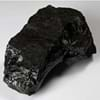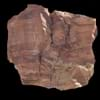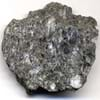Definition
Coal is a combustible black or brownish-black sedimentary rock usually occurring in rock strata in layers called coal beds
Obsidian is a naturally occurring volcanic glass formed as an extrusive igneous rock. It is produced when felsic lava extruded from a volcano cools rapidly with minimum crystal growth
Discoverer
John Peter Salley
Obsius
Etymology
From the Old English term col, which has meant mineral of fossilized carbon since the 13th century
From Latin obsidianus, misprint of Obsianus (lapis) (stone) of Obsius
Class
Sedimentary Rocks
Igneous Rocks
Sub-Class
Durable Rock, Soft Rock
Durable Rock, Medium Hardness Rock
Group
Not Applicable
Volcanic
Other Categories
Coarse Grained Rock, Fine Grained Rock, Medium Grained Rock, Opaque Rock
Opaque Rock
Texture
Amorphous, Glassy
Glassy
Color
Black, Brown, Dark Brown, Grey, Light to Dark Grey
Black, Blue, Brown, Green, Orange, Red, Tan, Yellow
Durability
Durable
Durable
Appearance
Veined or Pebbled
Shiny
Interior Uses
Not Yet Used
Decorative Aggregates, Interior Decoration
Exterior Uses
Not Yet Used
Garden Decoration
Other Architectural Uses
Not Yet Used
Not Yet Used
Construction Industry
Cement Manufacture, for Road Aggregate, Making natural cement, Steel Production
Arrowheads, Cutting Tool, Knives, Scrapers, Spear Points
Medical Industry
Not Yet Used
Surgery
Antiquity Uses
Artifacts
Artifacts, Jewellery
Commercial Uses
Alumina Refineries, Electricity Generation, Liquid Fuel, Manufacture of Soap, Solvents, Dyes, Plastics and Fibres, Paper Industry
Creating Artwork, Mirror, Used in aquariums
Types
Peat, Lignite, Sub-Bituminous Coal, Bituminous Coal, Anthracite, Graphite
Fireworks Obsidian, Mahogany, Sheen Obsidian, Snowflake obsidian and Velvet Peacock Obsidian
Features
Helps in production of Heat and Electricity, Used as fossil fuel
Blocks negativity, Helps to protect against depression
Archaeological Significance
Monuments
Not Yet Used
Not Yet Used
Famous Monuments
Not Applicable
Not Applicable
Sculpture
Not Yet Used
Not Yet Used
Famous Sculptures
Not Applicable
Not Applicable
Pictographs
Not Used
Used
Petroglyphs
Not Used
Used
Figurines
Not Yet Used
Not Yet Used
Formation
Coal forms from the accumulation of plant debris in a swamp environment which is buried by sediments such as mud or sand and then compacted to form coal.
When the lava is released from volcano, it undergoes a very rapid cooling which freezes the mechanisms of crystallization. The result is a volcanic glass with a uniform smooth texture.
Mineral Content
Analcime, Apatite, Barite, Calcite, Chalcopyrite, Chlorite, Chromite, Clausthalite, Clay Minerals, Crandallite Group, Dolomite, Feldspar, Galena, Gypsum, Marcasite, Muscovite or Illite, Pyrite, Quartz, Siderite, Sphalerite, Zircon
Not Available
Compound Content
Carbon, Hydrogen, Nitrogen, Oxygen, Sulphur
Aluminium Oxide, CaO, Iron(III) Oxide, FeO, Potassium Oxide, MgO, MnO, Sodium Oxide, Phosphorus Pentoxide, Silicon Dioxide, Titanium Dioxide
Types of Metamorphism
Burial Metamorphism, Cataclastic Metamorphism, Regional Metamorphism
Burial Metamorphism, Cataclastic Metamorphism, Contact Metamorphism
Types of Weathering
Not Applicable
Biological Weathering, Chemical Weathering, Mechanical Weathering
Types of Erosion
Not Applicable
Chemical Erosion, Coastal Erosion, Glacier Erosion
Grain Size
Medium to Fine Coarse Grained
Not Applicable
Fracture
Conchoidal
Conchoidal
Porosity
Less Porous
Very Less Porous
Luster
Dull to Vitreous to Submetallic
Vitreous
Compressive Strength
Not Available
Cleavage
Non-Existent
Non-Existent
Toughness
Not Available
Not Available
Specific Gravity
1.1-1.4
2.6-2.7
Transparency
Opaque
Translucent
Density
1100-1400 g/cm3
2.6 g/cm3
Resistance
Heat Resistant
Heat Resistant, Impact Resistant
Deposits in Eastern Continents
Asia
Bangladesh, Burma, Cambodia, China, India, Indonesia, Kazakhstan, Malaysia, Mongolia, Pakistan, Turkey, Vietnam
Afghanistan, Indonesia, Japan, Russia
Africa
Botswana, Kenya, Morocco, Mozambique, South Africa, Tanzania
Kenya
Europe
Belgium, Bulgaria, England, France, Germany, Greece, Hungary, Kosovo, Netherlands, Norway, Poland, Romania, Serbia, Slovakia, Slovenia, The Czech Republic, Ukraine, United Kingdom
Greece, Hungary, Iceland, Italy, Turkey
Others
Not Yet Found
Not Yet Found
Deposits in Western Continents
North America
Canada, Mexico, USA
Canada, Mexico, USA
South America
Brazil, Chile, Colombia, Venezuela
Argentina, Chile, Ecuador, Peru
Deposits in Oceania Continent
Australia
New South Wales, Queensland, Victoria
New Zealand
All about Coal and Obsidian Properties
Know all about Coal and Obsidian properties here. All properties of rocks are important as they define the type of rock and its application. Coal belongs to Sedimentary Rocks while Obsidian belongs to Igneous Rocks.Texture of Coal is Amorphous, Glassy whereas that of Obsidian is Glassy. Coal appears Veined or Pebbled and Obsidian appears Shiny. The luster of Coal is dull to vitreous to submetallic while that of Obsidian is vitreous. Coal is available in black, brown, dark brown, grey, light to dark grey colors whereas Obsidian is available in black, blue, brown, green, orange, red, tan, yellow colors. The commercial uses of Coal are alumina refineries, electricity generation, liquid fuel, manufacture of soap, solvents, dyes, plastics and fibres, paper industry and that of Obsidian are creating artwork, mirror, used in aquariums.










